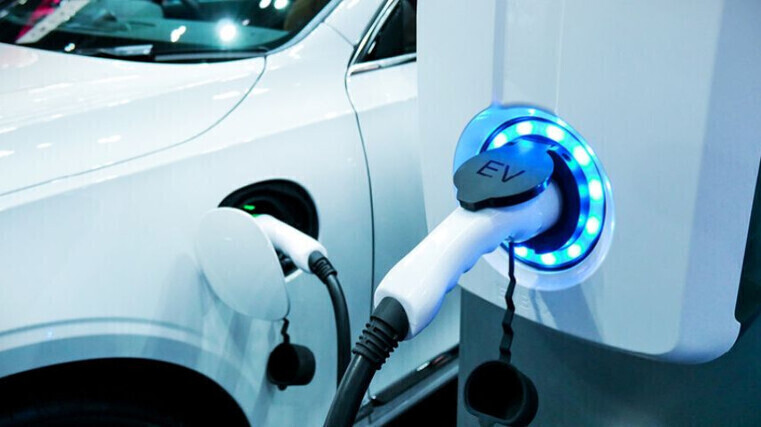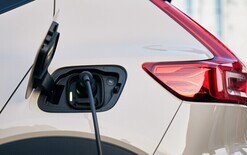Funding revamp for chargers

A loan scheme is being introduced by the coalition in an attempt to expand the country’s public-charging network and thereby boost demand for electric vehicles.
It is putting $68.5 million towards interest-free loans and scrapping the co-funding model currently administered by the Energy Efficiency and Conservation Authority (EECA),
Companies building facilities will be able to apply for the direct government grants via a contestable fund, says Chris Bishop, Minister of Transport.
“Concessionary loans will bring forward private investment in public EV charging infrastructure by lowering the cost of capital. They will also provide better value for money by maximising private-sector investment while keeping the taxpayers’ contribution to a minimum.”
The loans will cover up to half of project cost. The scheme will be administered by National Infrastructure Funding and Financing. It’s the successor to Crown Infrastructure Partners and will match the “highly successful” model which rolled out ultra-fast broadband, adds Bishop.
He believes the grants via EECA made sense when the public-charging market was being established. EVs now make up more than two per cent of the light fleet and that’s projected to grow to 11 per cent by 2030, so a loan scheme is a “more sophisticated, commercial procurement model”.
The loans will offer up to 50 per cent of project costs, have a zero per cent interest rate and a maximum tenure of 13 years. They will be awarded through a contestable co-investment bid process.
Applications will be assessed against value-for-money criteria to ensure finance is awarded to projects “of greatest benefit” and that New Zealand’s EV charging network grows “at pace”. A request for proposals for interested parties is expected to be released shortly.
“Under the status quo, the private sector is reluctant to invest in charging infrastructure until there’s sufficient demand,” says Bishop.
“But demand for charging won’t grow until the purchase of EVs stops being hampered by a lack of public charging. This chicken-and-egg situation is hampering the roll-out and justifies government action.”
The announcement was made by Bishop and Act Party minister Simon Watts, who holds the energy portfolio.
During coalition negotiations, Act secured a concession that any charging network be subject to a “robust cost-benefit analysis to ensure maximum benefit for government investment”.
Bishop says: “Giving effect to commitments made on the National-Act agreement, this competitive tension will help ensure public investment flows to proposals delivering the best value for money.
“A cost-benefit analysis will be applied at the point loan applications are assessed with a successful applicant having demonstrated that the benefits to New Zealand of its project outweigh the costs.”
At a Beehive press conference on April 27 to announce the scheme, Bishop admitted that hitting the 10,000 target for public changers might be difficult, describing it as “an ambitious goal, I’d call it a stretch”.
Also, the $68.5m in co-funding grant money is a whopping 73.4 per cent less than what National promised on the campaign trail when it said it would invest $257m in such infrastructure.
Bishop says he has been advised by officials that more funding would be needed to hit the 10,000 target, but it would be less than $100m. “There will be future investment required.”
He adds the $257m cost of the scheme National had budgeted for on the election trail was a “back of the envelope” calculation “based on what we were seeing at the market at the time”.
Industry reaction mixed
EV industry group Drive Electric says it’s positive the government realises New Zealand needs more public chargers.
That said, chair Kirsten Corson doubts the loan scheme will make a significant difference because the biggest barrier for companies building charging infrastructure is dealing with dozens of lines companies.
“With 29 different parties we have got a lack of consistent pricing, a lack of consistent processes and a lack of visibility of network capacity.”
Corson says this needs to change for the network to expand quickly or, “this is going to become National’s KiwiBuild where we don’t come anywhere close to 10,000 chargers by 2030”.
At the end of last year, there were 1,378 public charging points or about one for every 84 EVs. The government is targeting 10,000 by 2030, so there’s one for 40 EVs.
ChargeNet, New Zealand’s largest public EV charging provider, has welcomed the commercial foundations of the scheme.
Chief executive Danusia Wypych says: “A significant barrier to uptake in EV ownership is the state of the public-charging infrastructure. We have the lowest ratio of public EV chargers per EV in the OECD. We must turn that around to realise the economic benefits of electrification.”
She believes the new co-funding model will accelerate investment in EV infrastructure. Its structure would ensure financial discipline in commercial partnering, while the opportunity to submit portfolio bids could support investment in different charging locations and speeds.
For company fleets looking to cut operating costs, EVs make economic sense and expanding the public-charging infrastructure will further support the practicality of large-scale fleet electrification.
Wypych says: “The public-charging network is core strategic national infrastructure. We welcome the government’s acknowledgement of the need to increase investment ahead of rising EV demand. This co-funding is an important step towards building the network the country needs.”
‘Quicker to implement’
Since 2016, government investment in EV chargers has consisted of direct grants. This made sense when the market for public EV charging was being established, says Bishop.
“This model is outdated with EVs now making up over two per cent of the light fleet and is expected to make up around 11 per cent by 2030. A range of charge-point operators has now entered the market.
“Loans will be quicker to implement and will help achieve the government’s objectives with less complexity, cost and risk.
“Loans will be awarded through contestable co-investment rounds and applications will be open to proposals to establish portfolios of public sites, such as multiple-charging locations. This is the best way to support scaled-up development and maximise competitive tension between providers.”
Watts says: “By co-investing to accelerate public EV infrastructure ahead of demand, we will give more Kiwis the confidence to go electric.”
Consumer monitoring by EECA shows some of the main perceived disadvantages of EVs include their range being unsuitable for long-distance travel and there are not enough public chargers available.
It says increasing the availability of public infrastructure gives drivers the confidence to switch to EVs. See EECA’s Transport Monitor for more information.





